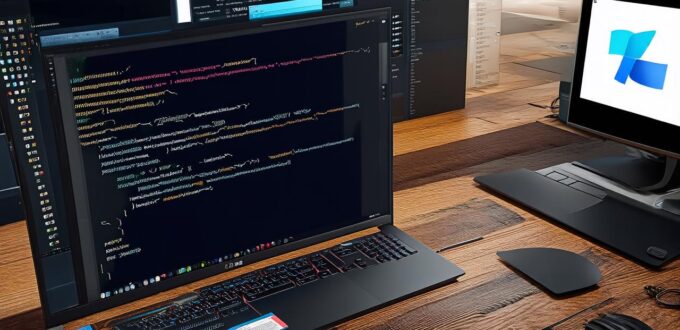Programming software is a rewarding and challenging career that requires a combination of technical skills and creativity. To become a successful programmer, it’s essential to define your goals, choose the right programming language and development environment, learn the basics, write your first program, debug your code, join a community, build your portfolio, and continuously learn.

Step 1: Define Your Goals
Before diving into the world of programming, it’s crucial to determine what you want to achieve. Are you looking to build a web application, create a mobile app, or develop a software tool? Once you have a clear goal in mind, you can start researching the best programming language and framework for your project.
Step 2: Choose a Programming Language
There are many programming languages available, each with its strengths and weaknesses. Some popular programming languages include Python, Java, JavaScript, C++, Ruby, and PHP. To choose the right language, consider the type of software you want to develop, your experience level, and the job market for that language.
Step 3: Choose a Development Environment
A development environment is the software and tools you’ll use to write, test, and debug your code. Some popular development environments include Visual Studio Code (VSCode), Atom, Sublime Text, and Eclipse. Choose an environment that fits your needs and preferences.
Step 4: Learn the Basics
Once you have chosen a programming language and development environment, it’s time to start learning the basics. There are many resources available online for beginners, including tutorials, courses, blogs, and videos. Some popular platforms for learning programming include Codecademy, Udacity, Coursera, and edX.
Step 5: Write Your First Program
After you’ve learned the basics, it’s time to start writing your first program. Start with a simple program that demonstrates your understanding of the language and development environment you’re using. Remember to follow best practices for coding, such as using comments, naming variables descriptively, and organizing your code into functions and modules.
Step 6: Debug Your Code
Debugging is an essential part of programming that involves identifying and fixing errors or bugs in your code. Some common sources of errors include typos, syntax errors, logic errors, and runtime errors. To debug your code effectively, you can use tools such as breakpoints, print statements, and error handling to identify the source of the issue and determine the best course of action to fix it.
Step 7: Join a Community
Joining a community of developers is an excellent way to learn from others, get feedback on your code, and stay up-to-date with the latest trends and technologies in programming. Some popular communities for programmers include Stack Overflow, GitHub, Reddit, and Meetup.
Step 8: Build Your Portfolio
Building a portfolio of projects is an excellent way to showcase your skills and demonstrate your value to potential employers or clients. Some popular types of projects for programmers include web applications, mobile apps, desktop applications, and data analysis tools.
Step 9: Continuously Learn
Programming is a constantly evolving field, and it’s essential to stay up-to-date with the latest technologies and best practices. Some ways to continuously learn include attending conferences, workshops, and meetups, reading books and blogs, and participating in online communities.
Real-Life Examples of Successful Programmers
To illustrate how these steps can lead to success in the software development industry, let’s look at some real-life examples of successful programmers who have followed these steps and achieved great things in their careers.
Conclusion
Becoming a successful programmer takes time, effort, and dedication. But with the right mindset, tools, and resources, anyone can learn to code and make a positive impact on the world. Remember to define your goals wisely, start with the basics, write your first program, debug your code, join a community, build your portfolio, and continuously learn.
